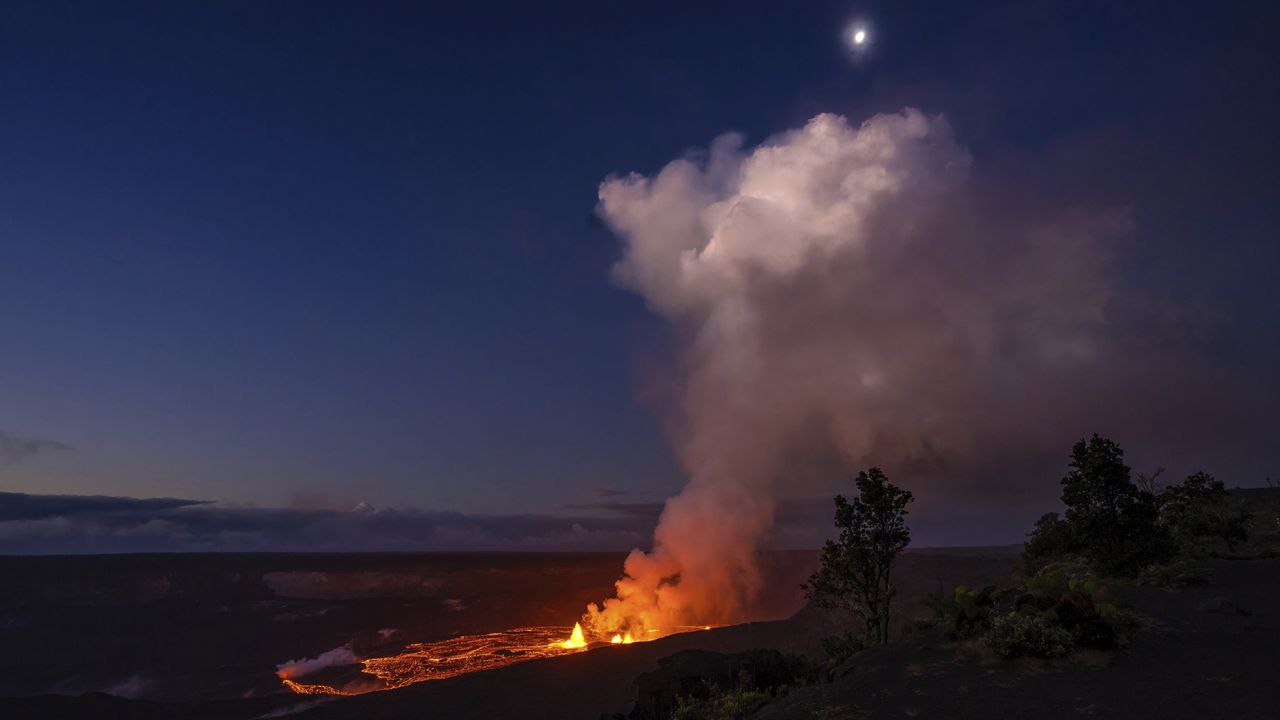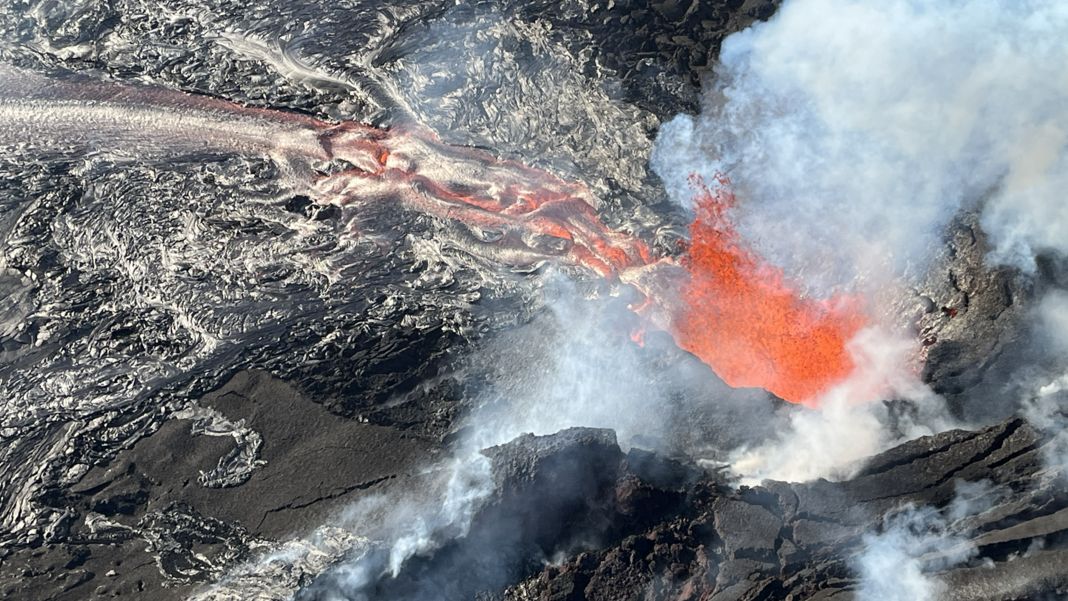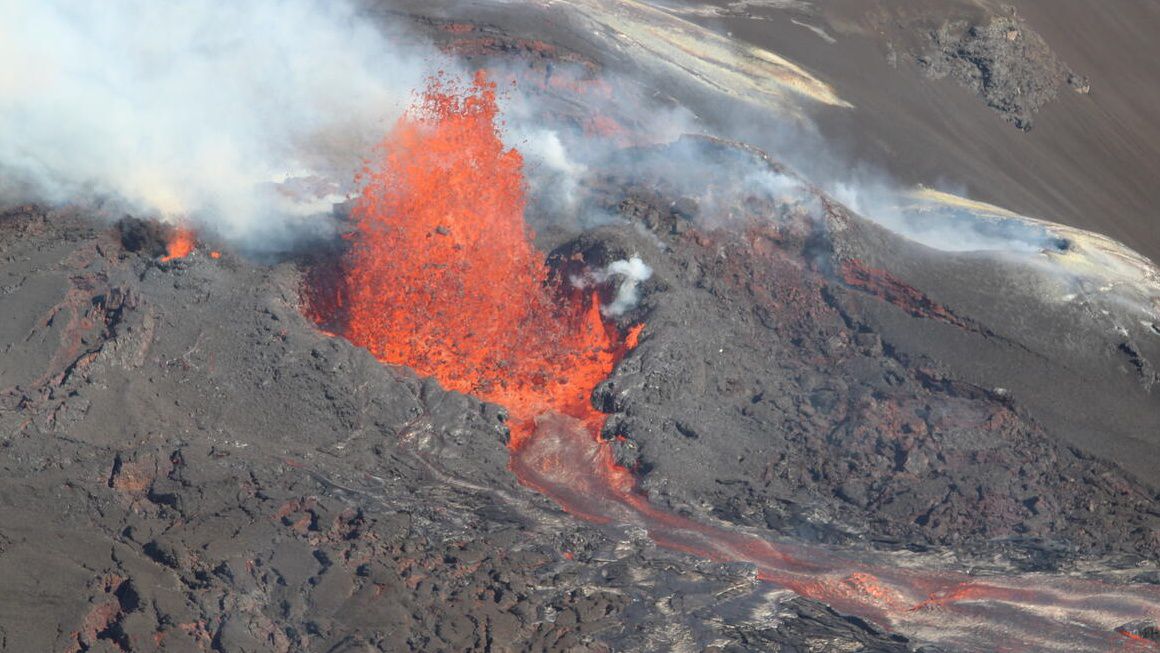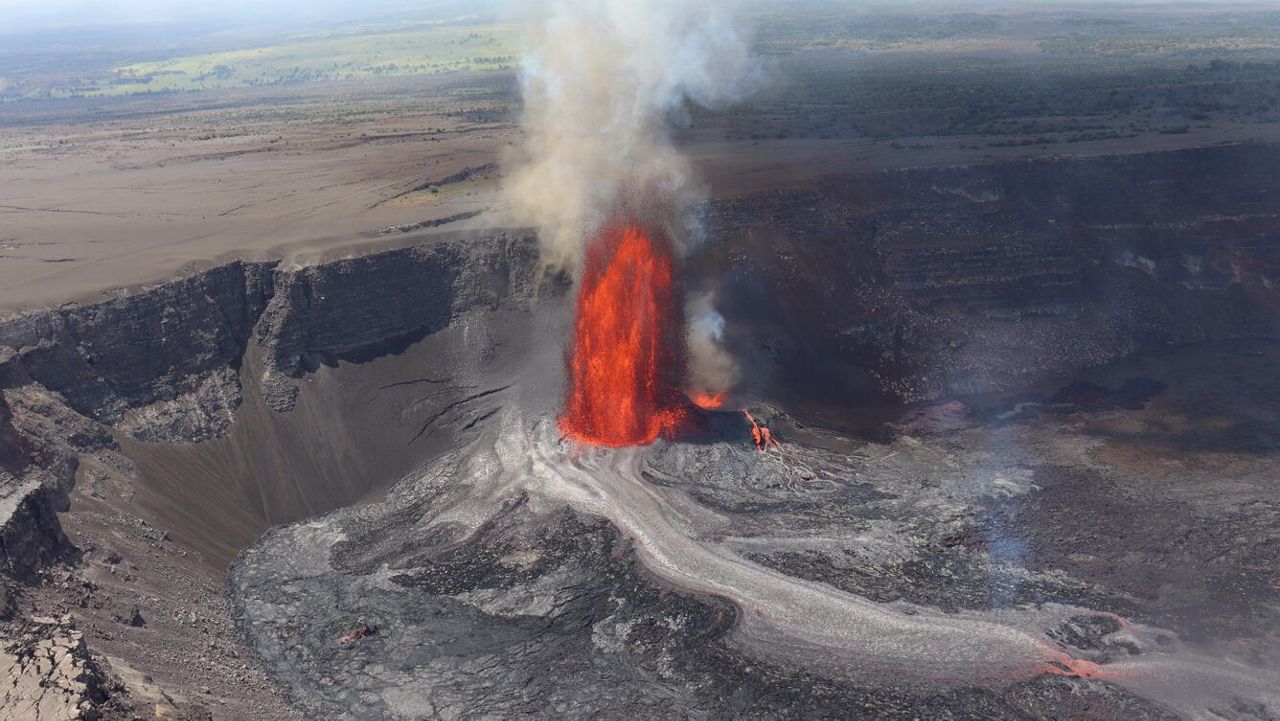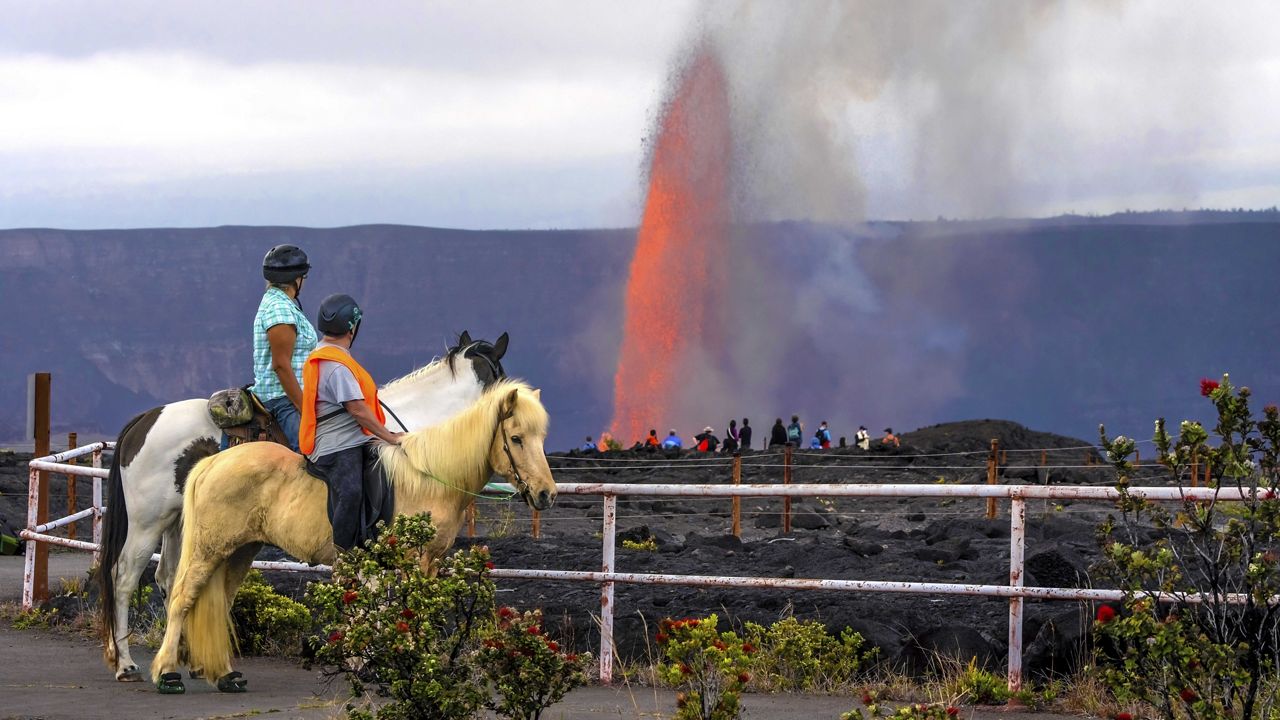HAWAII VOLCANOES NATIONAL PARK, Hawaii — Volcanic activity at Hawaii’s Kilauea is decreasing, according to the Hawaiian Volcano Observatory’s Tuesday morning update.
The eruption started last week on Wednesday within the Halema‘uma‘u crater in the summit caldera. Fountains of lava reached heights of 200 feet, spewing lava onto the crater floor and creating a “lava lake.” Lava fountains decreased later that day to heights of 13 to 30 feet.
As of Tuesday, only a few small fountains remain on the southwestern Halema‘uma‘u crater floor. The lava lake continues to be fed by a vent in its northeast corner. There is also a smaller circular “pool” of lava just southeast of the lake. The northern and eastern parts of the crater now appear stagnant.
On Monday afternoon, the summit tilt switched from ongoing deflation to mild inflation.
“The terms inflation and deflation refer to changes in pressure in the Kilauea summit magma chamber, situated a few kilometers below the caldera,” said Mike Zoeller, a geologist at the Hawaiian Volcano Observatory, in an email to Spectrum News Hawaii.
As pressure increases (inflation) in the magma chamber, the ground will tilt away from the Kilauea summit caldera. When pressure decreases (deflation), the ground will tilt back towards the caldera. Zoeller compared the process to inflating and deflating a tire, with spots on the tire’s surface bending slightly differently depending on the air pressure within.
“Substantial inflation tends to precede eruptions as pressure builds within the magma chamber, then deflation often follows as magma exits the chamber to erupt at the surface, reducing the pressure. But we frequently see minor cycles of deflation and inflation ("DI events") at Kilauea that do not result in any apparent eruptive changes,” Zoeller said.
At the caldera, the changes may be so small that they are not perceptible to humans. HVO tracks pressure in the magma chamber with a network of monitoring instruments at the surface.
Eruptive tremors continue at the summit, signaling fluid movement below the ground. Zoeller said the HVO does not make predictions on the duration of eruptions, but noted the last three eruptions at the Kilauea summit lasted five months, 14 months, and two months.
“It would be unsurprising to see this eruption last for a similar period of time,” Zoeller said.
Volcanic gas emissions remain high, although not as high as at the beginning of the eruption. Initially, HVO gas geochemists collected data that showed 65,000 tonnes per day of sulfur dioxide was being emitted from the volcano. On Sunday, 7,400 tonnes per day was measured.
In recent years, Kilauea erupted from September 2021 until December 2022, and this year from January until March. Another Hawaii Island volcano, Mauna Loa, also erupted last year, after being quiet for since 1984.
Michelle Broder Van Dyke covers the Hawaiian Islands for Spectrum News Hawaii. Email her at michelle.brodervandyke@charter.com.





